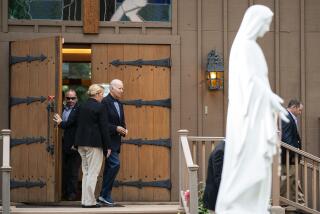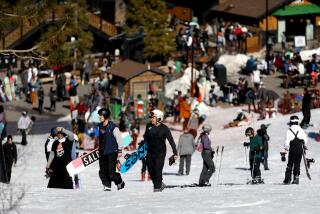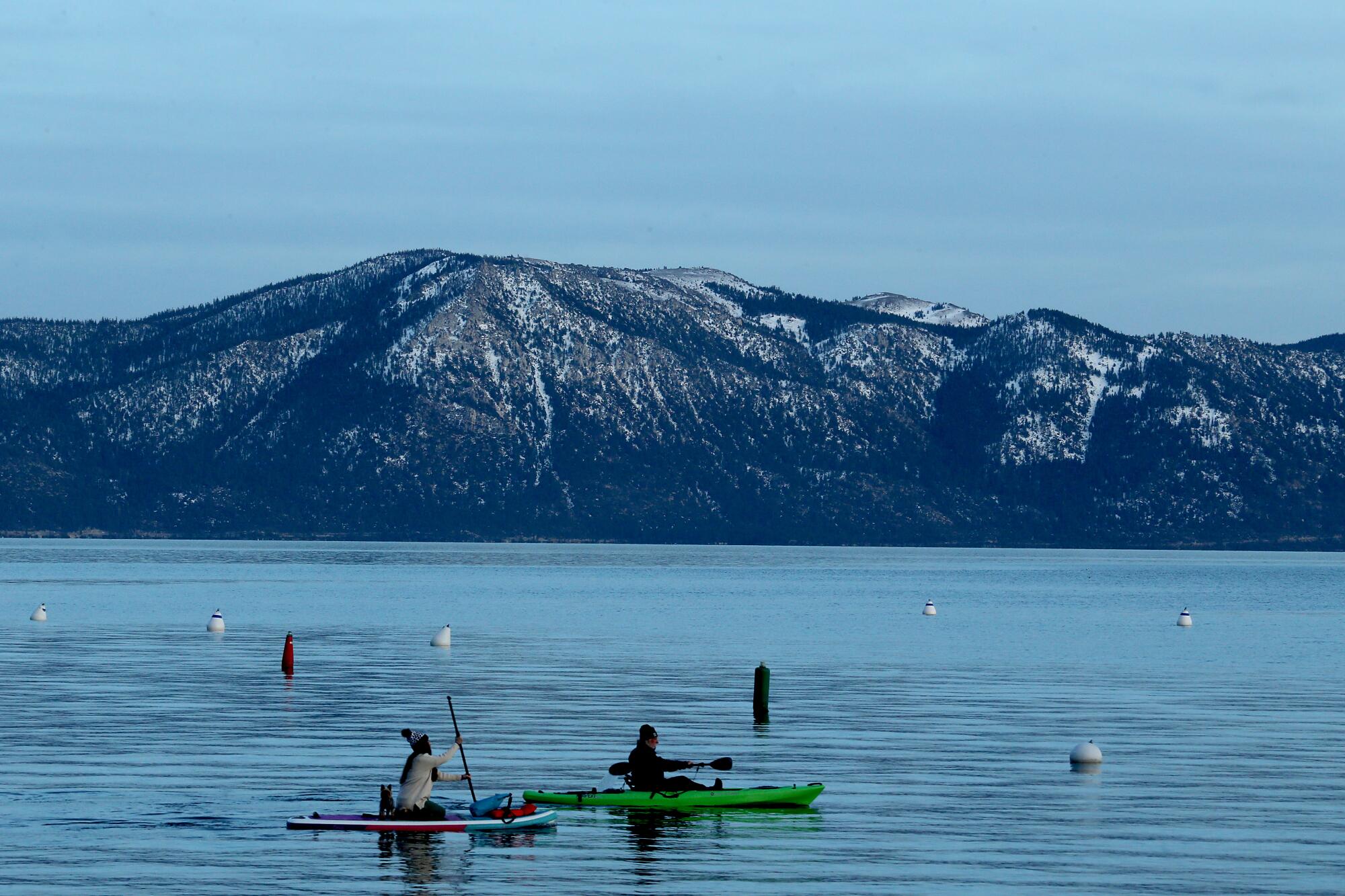
- Share via
SOUTH LAKE TAHOE — When Mayor Tamara Wallace looks out her office window from her perch within the Lake Tahoe Community Presbyterian Church, she’s afforded a bird’s-eye view of the traffic along Route 50, which has been pretty thick since the pandemic began in March.
And if she’s at her aerie before 2 p.m., there’s no denying the foot traffic going in and out of the Red Hut Breakfast Cafe, which sits adjacent to the church’s parking lot. The owners — Wallace’s longtime South Lake Tahoe neighbors — have refused to close down their restaurant to indoor dining, despite state and local public health orders, which forbid indoor dining as coronavirus caseloads surge and regional ICU beds fill.
It has put Wallace in an awkward place.
As much as she wants to uphold the orders banning indoor dining, she’s had few tools at her disposal: El Dorado County’s sheriff and district attorney have both said they will not enforce the governor’s mandates.
Concerns about crowds will surely increase in Tahoe this week, after the state announced Tuesday that the Sacramento region, which includes Lake Tahoe, was no longer part of the state’s stay-at-home order. That means that hotels can reopen to recreational travelers and restaurants such as the Red Hut Cafe can legally offer outdoor dining, but not indoor service.
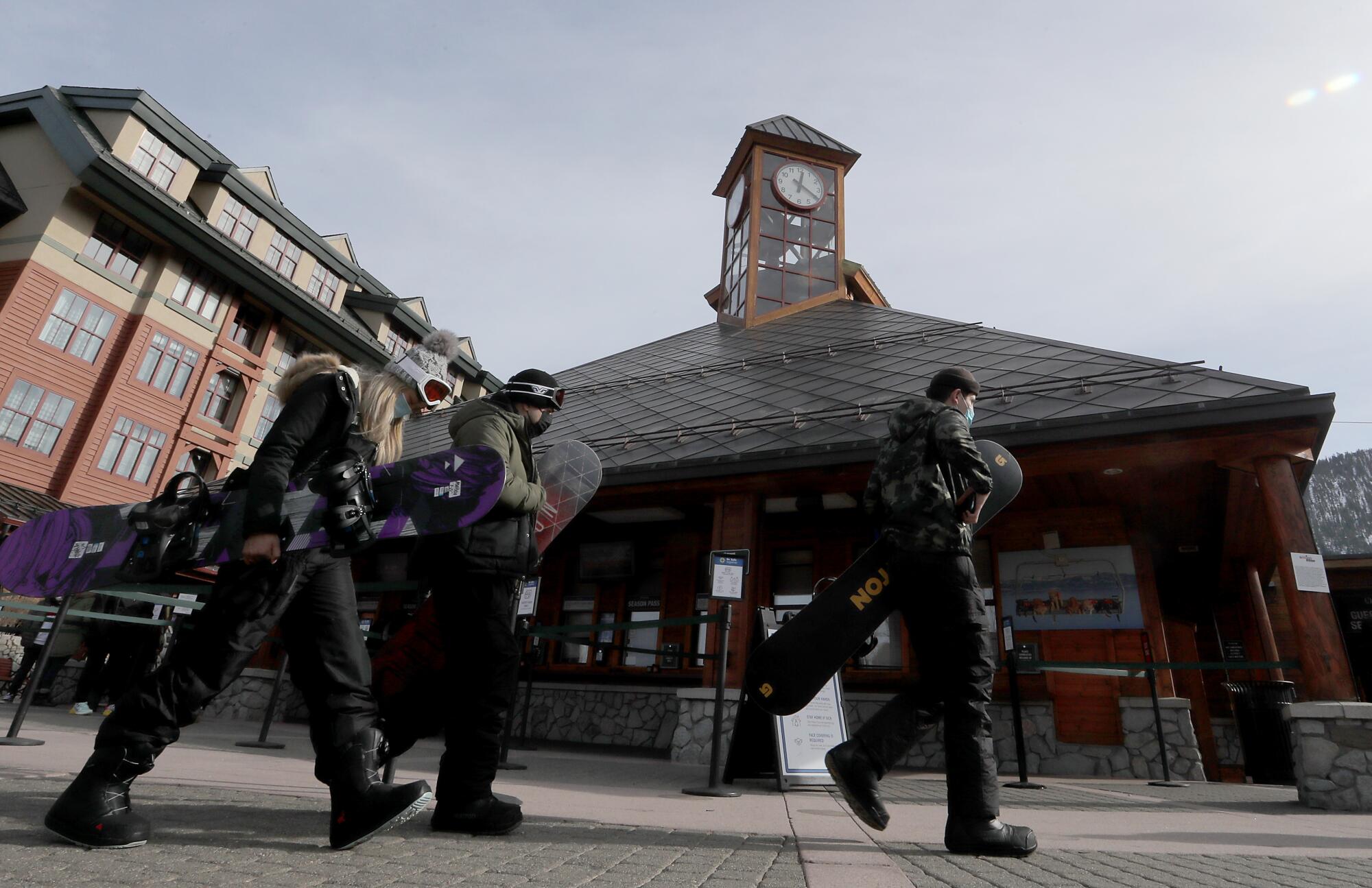
Public health experts say the coronavirus can easily spread in indoor settings — especially restaurants where patrons have to remove their masks to eat — but calls and emails to the Red Hut Cafe’s owners were not returned.
Just a mile and a half away, Nevada is allowing limited indoor dining, hotel lodging, short-term rental stays and more. The contrast, she said, helps explain why residents in her town are angry about being economically kneecapped.
Get inspired to get away.
Explore California, the West and beyond with the weekly Escapes newsletter.
You may occasionally receive promotional content from the Los Angeles Times.
“I worry about the virus, and I want my town to be safe,” Wallace said, noting her observations that most residents seem serious about mask wearing and social distancing. “But is it really that different a mile and a half away?”
For many California business owners, residents and politicians who live along Lake Tahoe’s western shores, the pandemic has saddled them with confusing and seemingly arbitrary rules and restrictions — some of which seem blind to the realities of daily life for those who live in this isolated, yet heavily visited, spot in the Sierra Nevada.
It’s no wonder why people want to flock here. On a recent Thursday, the snow-capped mountains that rim Tahoe could be seen reflecting in the cobalt-blue waters of the lake. But the crowds also clog the roads with traffic, dump their takeout containers around parking lots and trailheads, and fill portable toilets beyond capacity.
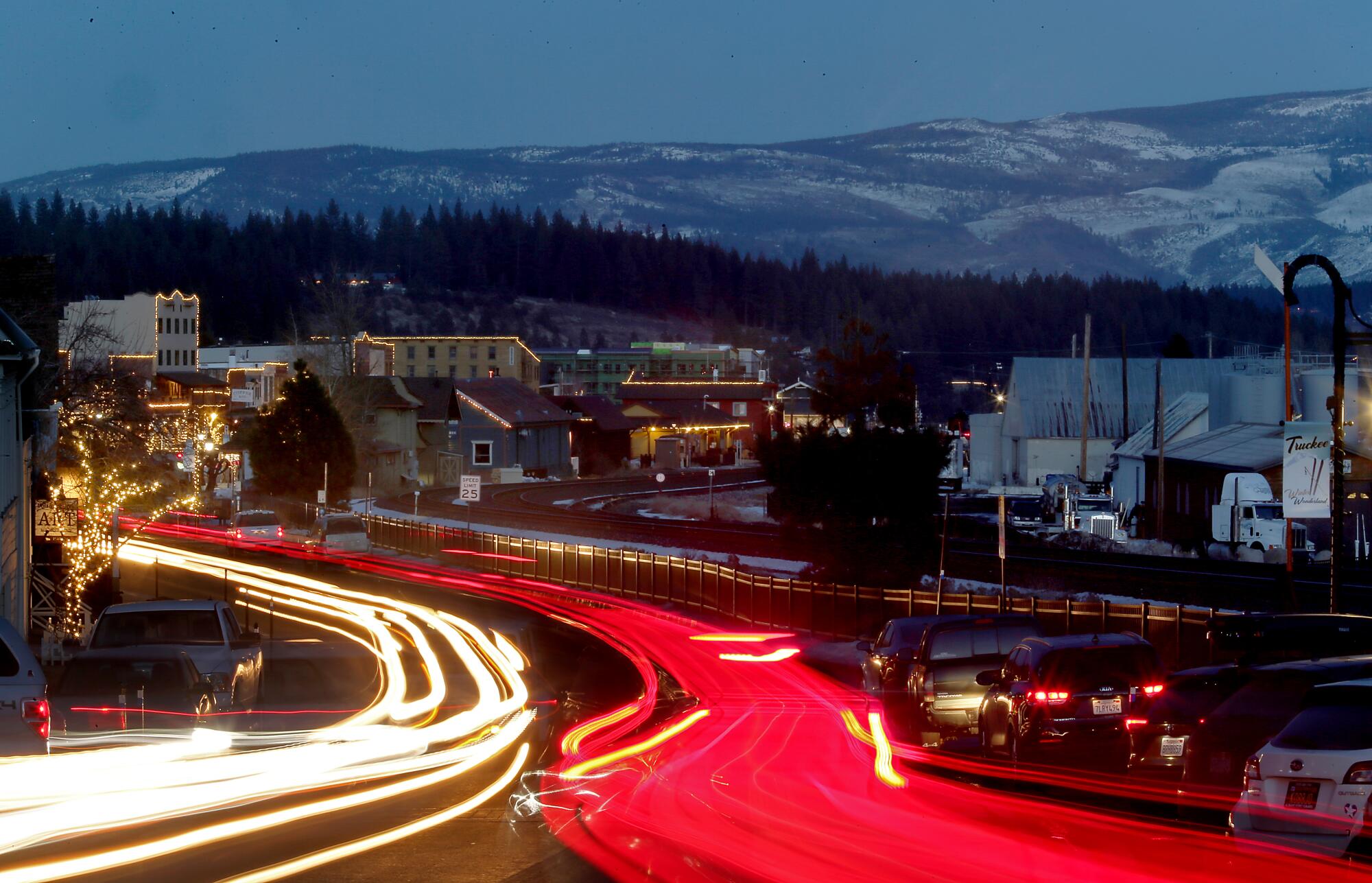
“It’s a very awkward and challenging dynamic,” said Dave Polivy, a Truckee Town Council member and owner of Tahoe Mountain Sports, an outdoor gear and clothing store in Truckee. “On top of all of those issues, we’ve got problems with worker equity, an influx of Bay Area transplants buying million-dollar homes, day trippers recreating and overrunning our infrastructure. And of course, there’s the fact that our economy depends on tourism.”
For many, the most jarring issue is the varying restrictions between California and Nevada: While the three California counties that flank the western basin of the lake were previously under some of California’s most restrictive coronavirus orders, across the state line, indoor restaurants, gyms, bowling alleys, casinos and movie theaters are open, albeit with limited capacity.
“It makes no sense,” said Tom Turner, the owner of five restaurants, including Gar Woods, around the lake. Turner has had to lay off roughly 500 workers since mid-December, when cases surged and Placer, El Dorado and Nevada counties entered the state’s most restrictive purple tier.
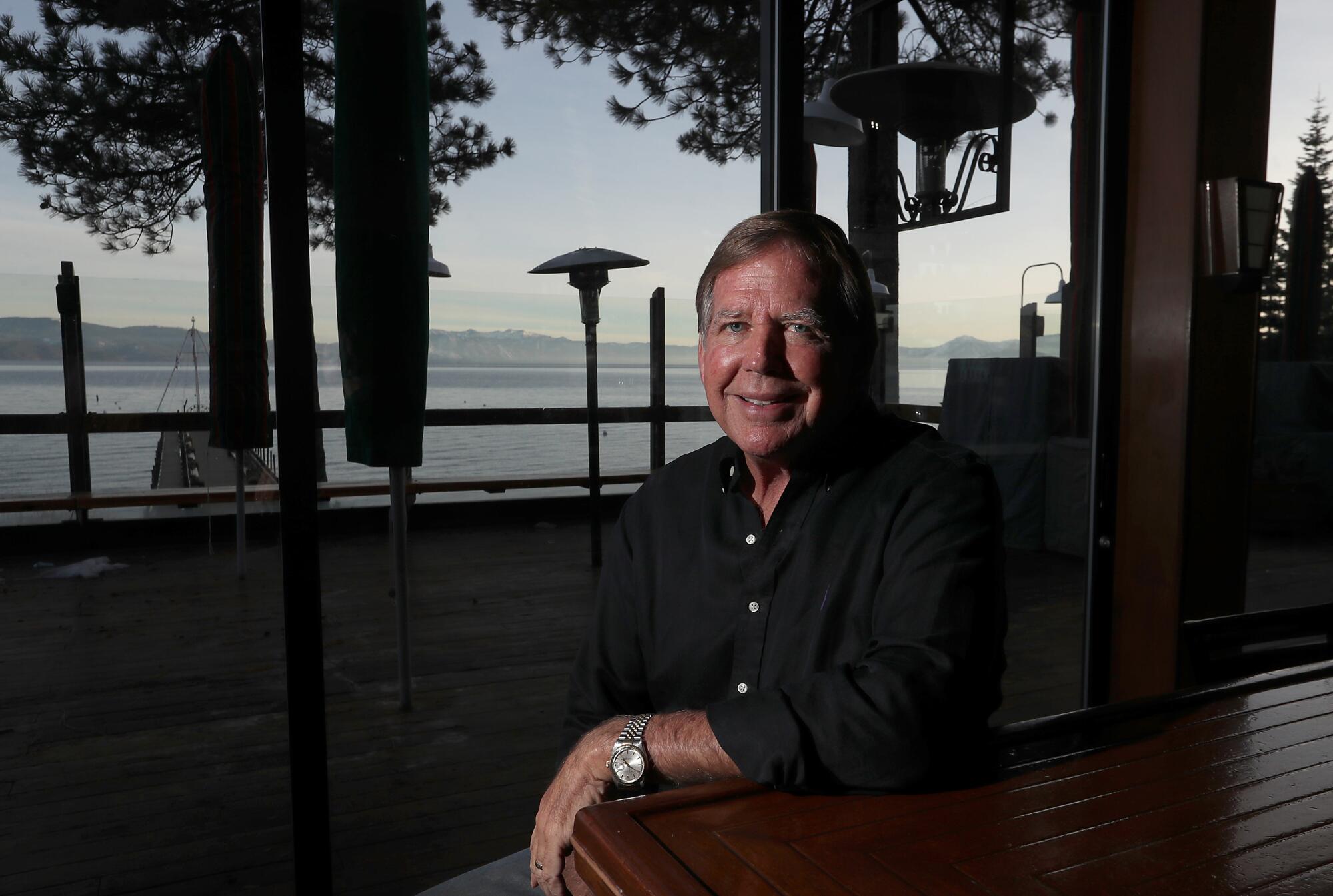
That same day in Incline Village, on the Nevada side, the parking lot outside of Starbucks was packed — with cars licensed in California — and customers sat at tables in the center’s common indoor eating area, outside the shop.
“How does that make any sense?” asked Turner, observing the “absurdity” of Californians driving over the state line to eat and recreate indoors. “It’s not like the virus stops at the border.”
Cindy Gustafson, a Placer County supervisor, who lives in Tahoe City, said most people on the California side shop in Nevada — Reno is the closest place for any kind of substantial shopping.
“It’s just an influx of people going back and forth,” she said, also noting the arbitrariness of the governor’s regional orders, which pulls unincorporated cities, such as Placer County’s Tahoe City, into the Greater Sacramento region.
“Auburn may be where the county seat is,” she said, “but we’re nothing like Auburn. We’re a rural, mountain town.”
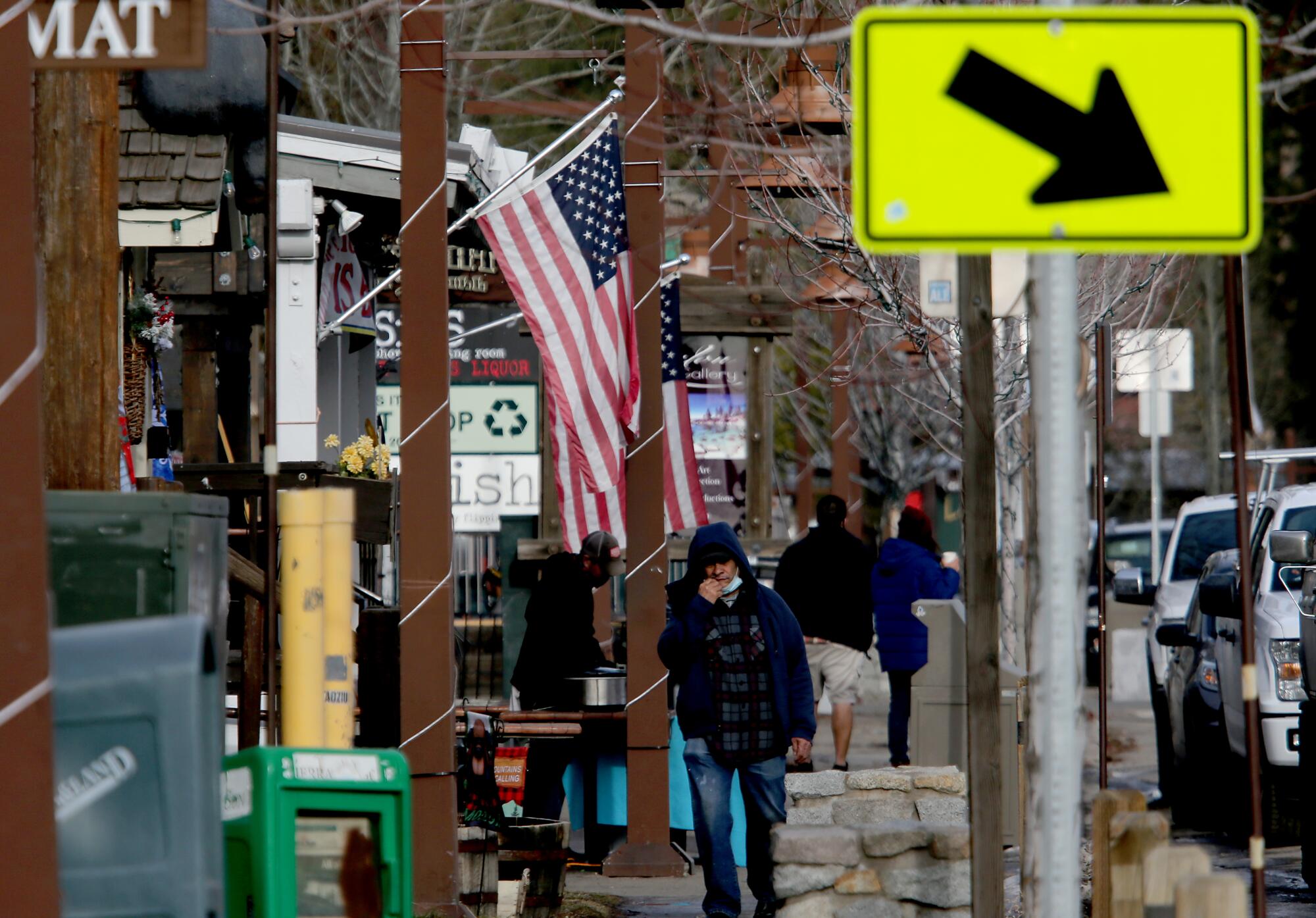
Eastern Placer County, which includes Tahoe, as of Thursday recorded a cumulative 593 cases of COVID-19 since the pandemic began. The southern region, which includes Auburn — a suburb of Sacramento — has had 13,058. The rates are roughly the same, but Gustafson and others say the scale is entirely different. And the 14-day averages also show a difference, with 199.7 cases per 100,000 in eastern Placer, and 698.6 cases per 100,000 in the more urban third of the county.
As of Thursday, the county’s ICU bed availability was at 9.9%.
But “you wouldn’t go to Auburn if you needed hospitalization,” she said. Residents of the Tahoe area are more likely to go to Truckee’s hospital, she said, where, as of Jan. 1 (the latest day for which numbers are available) four of six ICU beds are currently filled, and 17 of 25 hospital beds are in use.
Or they’d go to Renown Regional Medial Center in Reno, where the seven-day average indicates that 76.5 of the available 110 ICU beds are in use, meaning a roughly 30% availability.
Record numbers of visitors traveled to the region this fall, helping to compensate for lost tourism revenue earlier in the year. South Lake Tahoe collected $14.4 million in transit occupancy taxes in fiscal year 2020 — a 20% drop from the year prior.
“I worry about the virus, and I want my town to be safe. But is it really that different a mile and half away?”
— South Lake Tahoe Mayor Tamara Wallace on the proximity of her town to the Nevada border
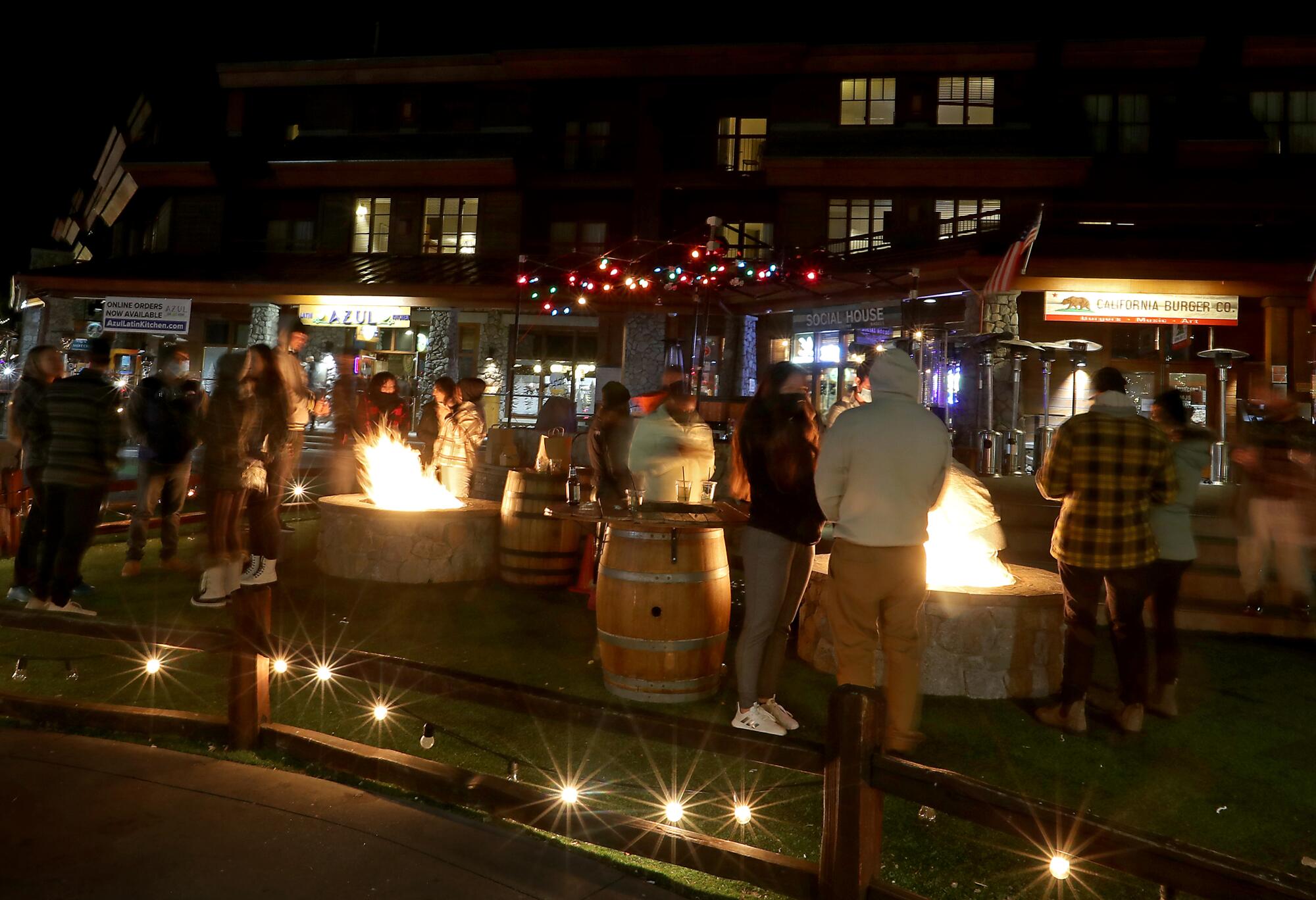
While some of that fall traffic has died down, the number of people visiting the area is still high, and likely to get higher this weekend. Ski resorts are open, and public trails and scenic beauty are available to anybody with a car and some free time.
For Polivy, in Truckee, the business has been great — he sold out of snowshoes weeks ago and despite trying to get more, his suppliers have been wiped clean, too.
“People are coming up from the Bay and Sacramento to get fresh air and get outside,” Polivy said, noting that many locals are annoyed by the traffic they bring and the garbage they leave behind.
“Some people are pretty upset. They move here for the solitude and isolation. And it feels like you can’t get away,” he said.
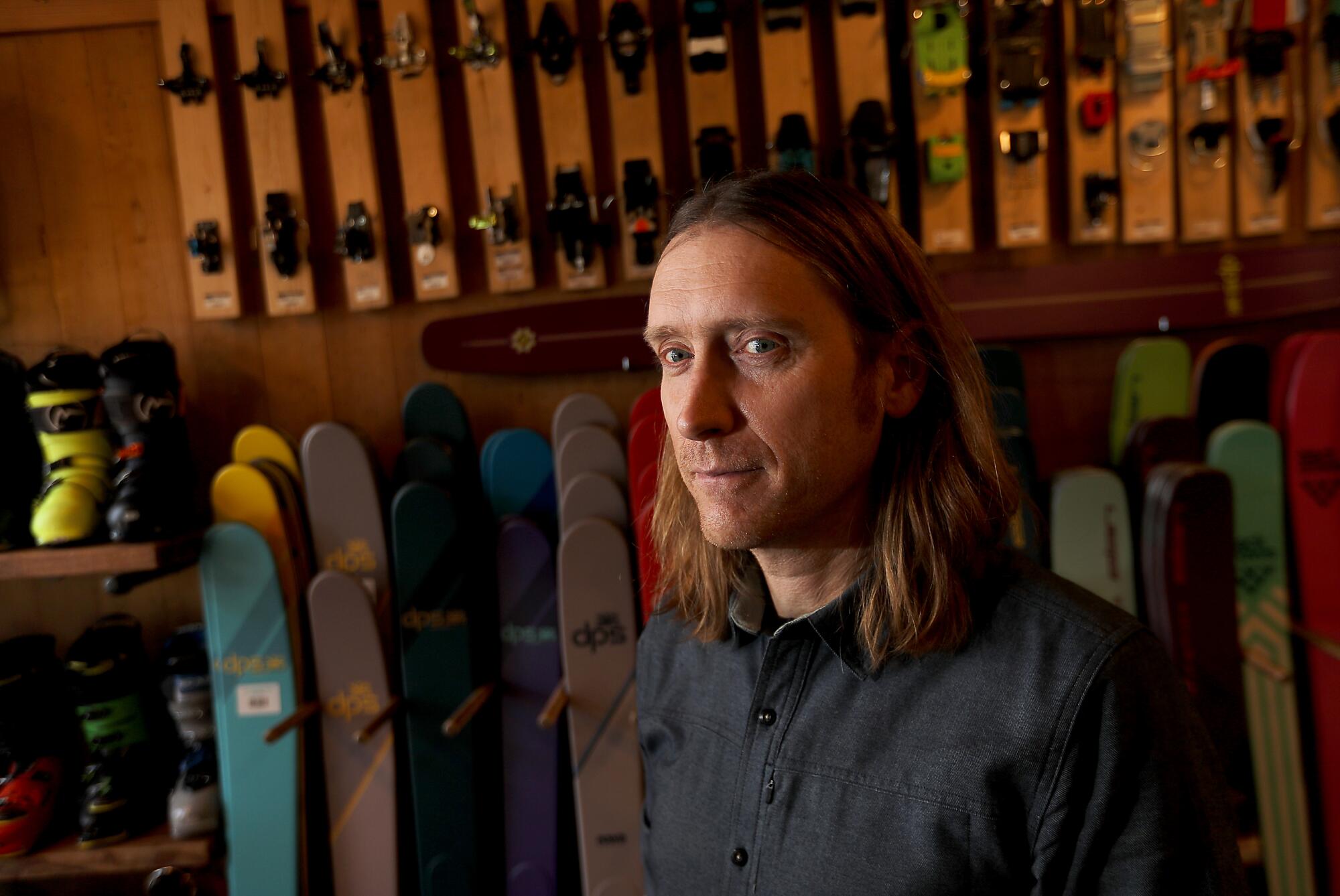
Brendan Madigan, the owner of Alpenglow Sports in Tahoe City, welcomes both the day trippers and more permanent transplants, a trend that started even before the pandemic. Tech workers and others moved in after realizing they didn’t have to live in overpriced, congested regions such as the Bay Area.
But this new kind of resident has caused other complications. The transplants have started buying up real estate, including million-dollar vacation homes, many financed by occasionally renting out via apps such as Airbnb or Vrbo.
Incorporated cities, such as Truckee and South Lake Tahoe, started placing restrictions and bans on short-term rentals before the pandemic. But the virus really laid the issue bare for longtime residents.
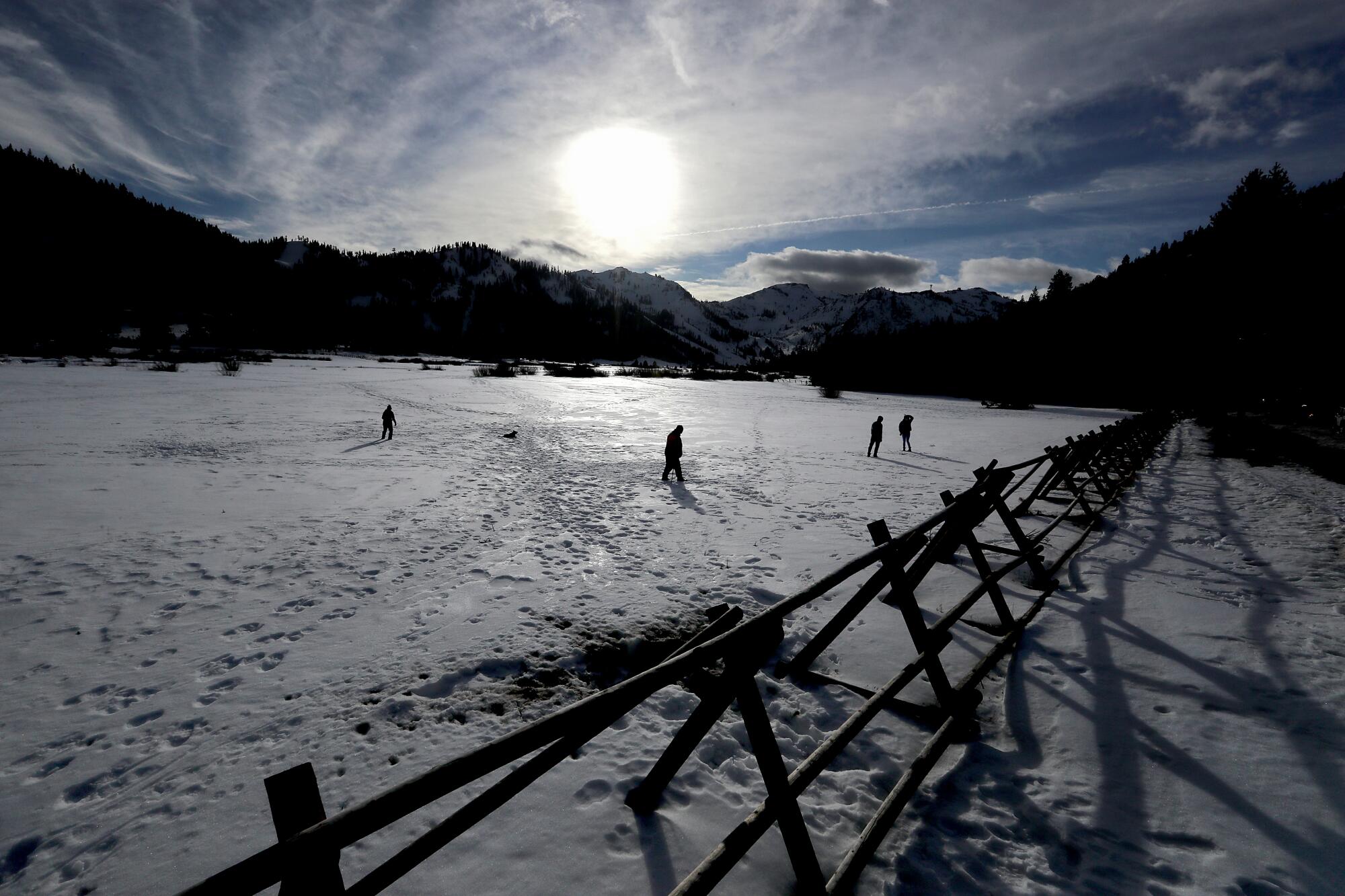
South Lake Tahoe’s residents voted to ban all short-term rentals last year — with the exception of areas within the city’s “Tourist Core.” And in Truckee, landlords are required to apply for annual permits, and register tenant information and stays.
Politicians are hoping these new measures can help strike a balance between those who moved here to capitalize on the booming economy and those who come here to get away.
And they keep coming.
Near the Mt. Rose Meadows sledding area on a recent weekday, out of 10 people who approached, all were from out of town: Three were up for the day, but seven were staying in short-term rentals on the California side.
One visitor, a law enforcement officer from the San Diego County area, said he’d brought his family up to get some relief from conditions back home.
“We needed a break,” said the visitor, who declined to give his name. “Things are pretty bad out there.”
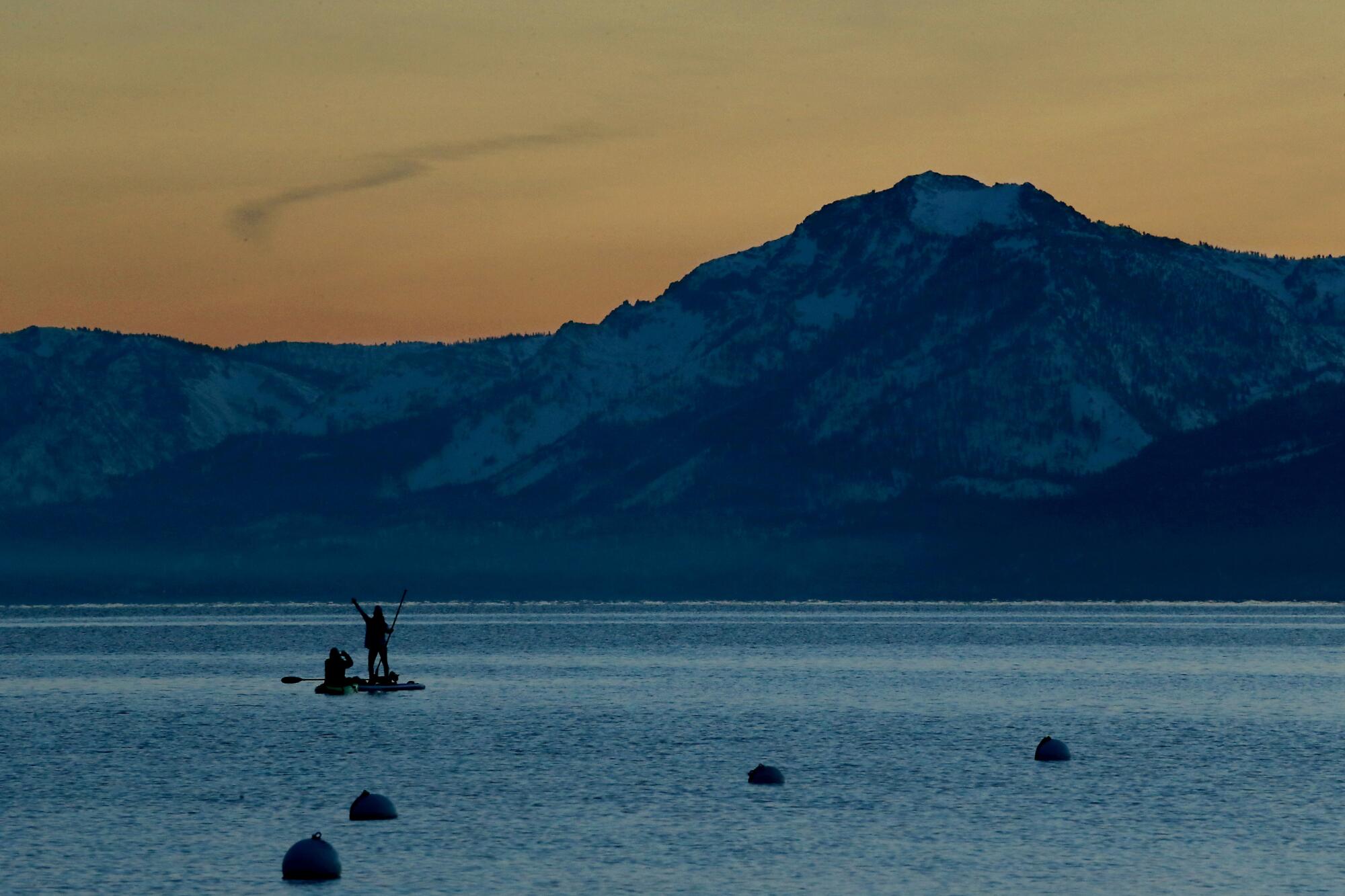
More to Read
Sign up for Essential California
The most important California stories and recommendations in your inbox every morning.
You may occasionally receive promotional content from the Los Angeles Times.
